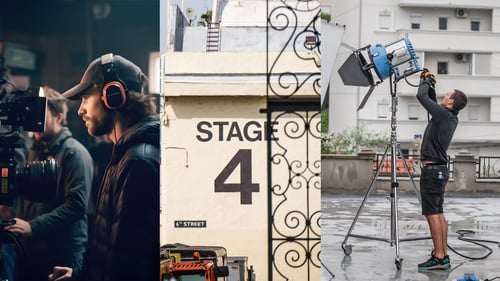Tax Credit Monitoring = No Surprises for Producers and Financiers

Keeping an eye on your tax credit’s value is critical to the overall financial health of a project. The last surprise you want at the end of a project is that your credit is less than expected.
Here are just a few examples of surprises caught during monitoring assignments:
- Missing the Threshold: Production is approved for a tax credit in a state-defined “enhanced county.” During production, it was determined that the anticipated shoot schedule is likely to miss the minimum threshold for that that county’s tax incentive.
- Contingency Triggered: Midway through principal photography, production needs to start using the contingency. This is a clear sign that post-production will be affected and/or additional financing may be required.
- Post Trauma: Feature film is shot in Ohio, but post-production is happening in New York. The post period is extended and, due to scheduling conflicts, some editing is performed in California. In this scenario, the production’s post-only tax credit is at risk because the “75% of qualified post production spend at a NY facility” threshold is not being met.
- Flag on the Play: Invoices for “production consultants” are flagged as qualified expenses in below-the-line production categories. “Consultants” raise flags to credit auditors and are likely to be disallowed in the audit process (there are examples of trying to qualify above-the-line production staff or professional fees in jurisdictions where such expenses are non-qualified).
Tax credit monitoring provides a “gut check” on preliminary estimates calculated by the line producer. Additionally, reports from a monitoring agent like GreenSlate highlight variances across account categories and estimates of the final credit value based on remaining ETCs (estimated costs to complete). This deeper-dive monitoring exercise can also track the current status against an opinion letter’s projections.
For Financiers, monitoring is typically standard practice as it results in better portfolio management, particularly when dealing with multiple credits in different jurisdictions. Addressing projected timing and expected proceeds along the way is invaluable. Commercial banks will likely require ongoing monitoring as part of broader underwriting and credit oversight. Private equity lenders watch timing and expected proceeds closely as changes in duration and final credit values have significant impact on realized IRRs.
At the production level, monitoring indirectly strengthens the project’s accounting process by addressing issues as they occur. For example, ensuring proper coding of expenses (labor and spend, in accordance with the state’s tax credit program), or confirming supporting documentation (“backup”) is obtained for expenditures (an absolute must for the credit audit), eases the transition from production to post production. Potential delays during the audit period for the final application submission are also reduced, keeping the credit on track.
At the very least, monitoring alerts stakeholders of issues that impact credit monetization. Producers love using film tax credits to help their projects get made, but their use entails massive amounts of production cost management and mishaps that occur during the production cycle can affect its monetization.
The state of your tax credit is too valuable to leave to the end! For more information about tax credit monitoring, or for any film tax incentives inquiries, contact Michele Miller, GreenSlate’s Director of Accounting Services.
Related Posts
Access our blog for the inside scoop on what’s happening around the production office.
Get The Best of The Blog
Get the best of the GreenSlate blog once a month in your inbox by signing up for our GreenSlate Newsletter.
“If you're not using GreenSlate for processing production payroll, then you're not thinking clearly. We run about 10–12 productions a year and have used several of their competitors. I've put off sharing this as I've truly felt they've been a competitive advantage.”
Jeffrey Price
CFO at Swirl Films, LLC



